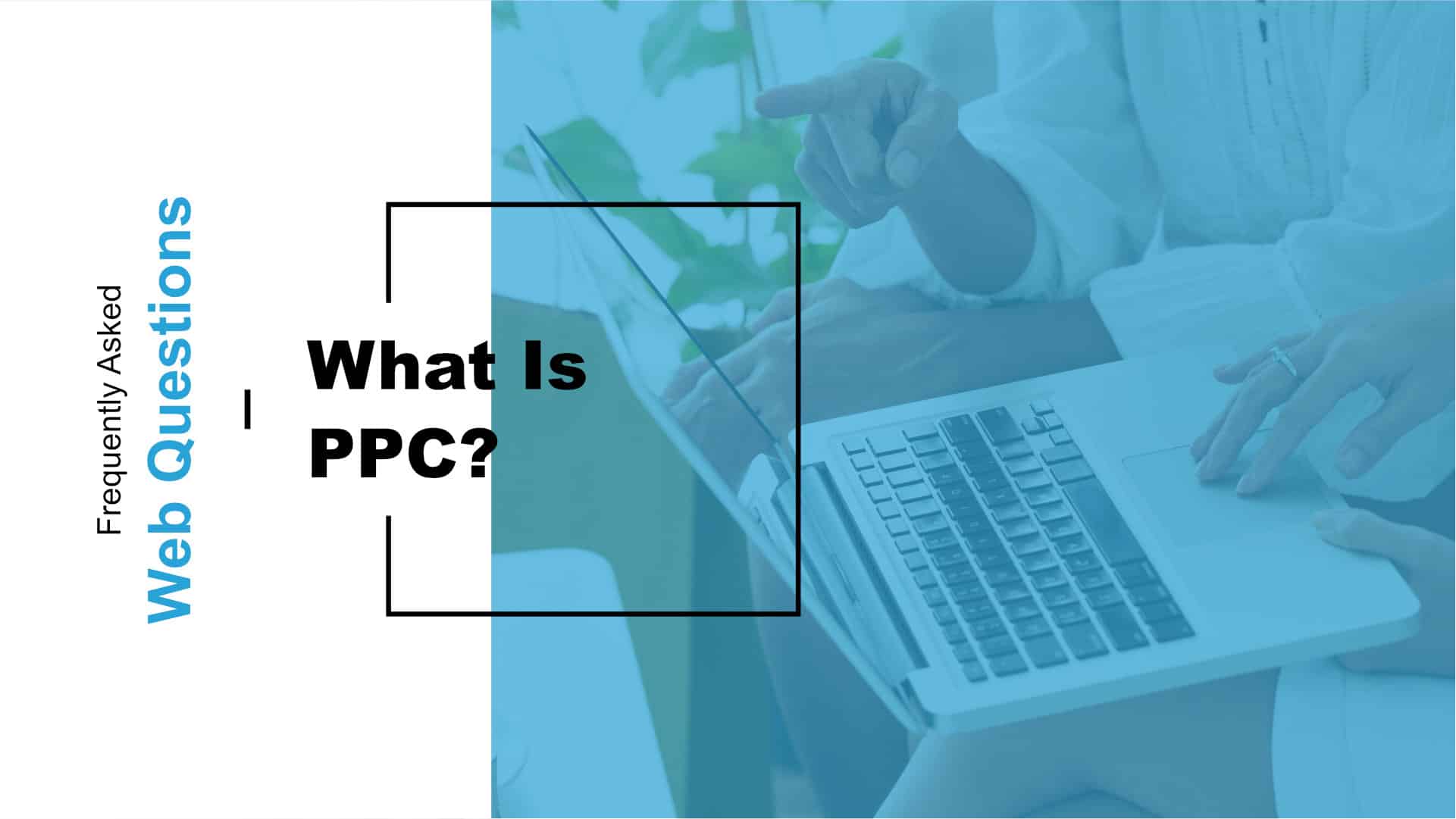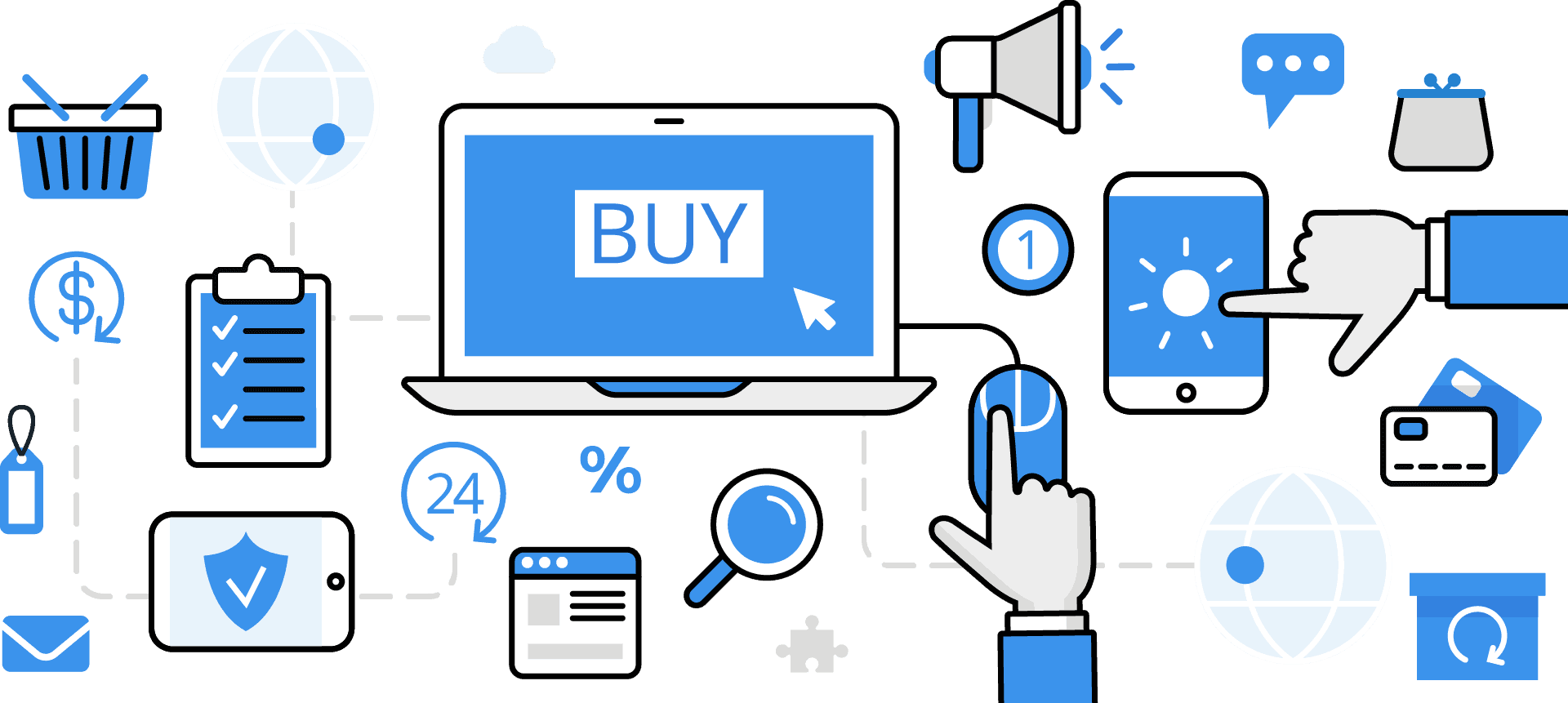
Go to Google and search “web design”. The first few results will likely include the exact phrase “web design” along with some supplementary links and their URL. Below the URL will probably be some very enticing and sales-y language. To the left of all of this and encased in a bright green box will be the word “Ad”. These ads are merely isolated examples of a form of digital marketing called Pay-Per-Click (PPC), which has caught the web by storm. Don’t worry though. PPC is easy to design and implement an effective campaign once someone understands what it is and how it works. Pay-Per-Click Advertising is a form of advertising in which marketers advertise on search engines like Google and social platforms like Facebook or Linkedin. The marketers set aside a budget for each advertising campaign they run on each platform. Each time that somebody clicks, and only when they click, a portion of that budget gets spent.
It’s a concept that seems deceivingly simple to understand: the creator only pays when somebody clicks on their ad. While that seems straightforward enough, business owners should familiarize themselves with the nitty-gritty of what PPC is and its many forms if they’re trying to run a successful campaign in 2019.
Google offers several formats for its PPC platform including Search, Display, and Remarketing advertisements. Search ads are perhaps the most widely recognized format of PPC ads. These are the ads that are situated above and to the sides of search results that are related specific terms specific to the query. They’re actually the same types of ads like the ones described above; with a green box stamped around the word “Ad”. A subset of search ads is local search ads. Businesses would use these ads to target Google users searching for similar businesses or services offered nearby on Google maps. This means that if Seven Ages Design ran a local search ad campaign, then its ads would be targeted at people Googling “web design” in Raleigh or close to its office.

Display ads are a type of advertisement that follows users who have searched for particular terms. These ads can be text-based or very media heavy, and they can follow users across 650,000 apps and two million websites. This means that if someone searches for “cigars Raleigh”, two weeks later they might see a smoky banner advertisement on Amazon for cigars at wholesale prices. What they’ve seen on Amazon is a display ad. Finally, Google’s Remarketing ads are directed exclusively at people who have visited a business’ website or mobile app in the past. These ads, which most often are delivered in the forms of search and display ads, offer incredible conversion rate increases and are a must for any PPC campaign.
Facebook’s PPC system works similarly to Google’s in that the business owner sets a budget and then creates ads in Facebook’s Ad Manager. Facebook offers a variety of media methods marketers can use including basic display ads, photo/video ads, and also carousel ads. Facebook also hosts some of the same delivery methods of Google like display ads and remarketing (often re-labeled as retargeting under Facebook’s platform). Once the ads are created they can be displayed on someone’s Facebook newsfeed, on their sidebar, and even in their audience network. The key difference between Facebook and Google’s PPC platform is the extent to which users can be effectively targeted. Facebook allows creators to generate hyper-focused ads to target particular subgroups of people based on their exhibited behaviors, liked pages, and content shared. This is in contrast to Google’s targeting abilities which rely much more on search terms and location than anything else.
LinkedIn also offers the ability for businesses to create PPC ads, albeit with a different function. Facebook and Google have the B2C market effectively cornered, but B2B is where LinkedIn shines brightest. These ads can be text-only or image-based, and can then be further segmented to target users belonging to specific companies, demographics, job titles, and even skillsets. Once generated, these ads will either rest at the bottom of a user’s page or they’ll be discreetly messaged to their inbox. For an ad to end up on a user’s LinkedIn newsfeed, content creators have to pay extra to generate what is known as Sponsored Content.
PPC is a handy and cost-effective method of advertising that should be a key component in any business’ digital marketing strategy. It’s obvious that each of its numerous platforms possesses unique advantages to better aid different business goals. After deciding which of the platforms would best help the development and actualization of these goals, business owners should take the time to familiarize themselves with the distinct benefits they’ll yield from utilizing PPC.
Go to Google and search “web design”. The first few results will likely include the exact phrase “web design” along with some supplementary links and their URL. Below the URL will probably be some very enticing and sales-y language. To the left of all of this and encased in a bright green box will be the word “Ad”. These ads are merely isolated examples of a form of digital marketing called Pay-Per-Click (PPC), which has caught the web by storm. Don’t worry though. PPC is easy to design and implement an effective campaign once someone understands what it is and how it works. Pay-Per-Click Advertising is a form of advertising in which marketers advertise on search engines like Google and social platforms like Facebook or Linkedin. The marketers set aside a budget for each advertising campaign they run on each platform. Each time that somebody clicks, and only when they click, a portion of that budget gets spent.
It’s a concept that seems deceivingly simple to understand: the creator only pays when somebody clicks on their ad. While that seems straightforward enough, business owners should familiarize themselves with the nitty-gritty of what PPC is and its many forms if they’re trying to run a successful campaign in 2019.
Google offers several formats for its PPC platform including Search, Display, and Remarketing advertisements. Search ads are perhaps the most widely recognized format of PPC ads. These are the ads that are situated above and to the sides of search results that are related specific terms specific to the query. They’re actually the same types of ads like the ones described above; with a green box stamped around the word “Ad”. A subset of search ads is local search ads. Businesses would use these ads to target Google users searching for similar businesses or services offered nearby on Google maps. This means that if Seven Ages Design ran a local search ad campaign, then its ads would be targeted at people Googling “web design” in Raleigh or close to its office.

Display ads are a type of advertisement that follows users who have searched for particular terms. These ads can be text-based or very media heavy, and they can follow users across 650,000 apps and two million websites. This means that if someone searches for “cigars Raleigh”, two weeks later they might see a smoky banner advertisement on Amazon for cigars at wholesale prices. What they’ve seen on Amazon is a display ad. Finally, Google’s Remarketing ads are directed exclusively at people who have visited a business’ website or mobile app in the past. These ads, which most often are delivered in the forms of search and display ads, offer incredible conversion rate increases and are a must for any PPC campaign.
Facebook’s PPC system works similarly to Google’s in that the business owner sets a budget and then creates ads in Facebook’s Ad Manager. Facebook offers a variety of media methods marketers can use including basic display ads, photo/video ads, and also carousel ads. Facebook also hosts some of the same delivery methods of Google like display ads and remarketing (often re-labeled as retargeting under Facebook’s platform). Once the ads are created they can be displayed on someone’s Facebook newsfeed, on their sidebar, and even in their audience network. The key difference between Facebook and Google’s PPC platform is the extent to which users can be effectively targeted. Facebook allows creators to generate hyper-focused ads to target particular subgroups of people based on their exhibited behaviors, liked pages, and content shared. This is in contrast to Google’s targeting abilities which rely much more on search terms and location than anything else.
LinkedIn also offers the ability for businesses to create PPC ads, albeit with a different function. Facebook and Google have the B2C market effectively cornered, but B2B is where LinkedIn shines brightest. These ads can be text-only or image-based, and can then be further segmented to target users belonging to specific companies, demographics, job titles, and even skillsets. Once generated, these ads will either rest at the bottom of a user’s page or they’ll be discreetly messaged to their inbox. For an ad to end up on a user’s LinkedIn newsfeed, content creators have to pay extra to generate what is known as Sponsored Content.
PPC is a handy and cost-effective method of advertising that should be a key component in any business’ digital marketing strategy. It’s obvious that each of its numerous platforms possesses unique advantages to better aid different business goals. After deciding which of the platforms would best help the development and actualization of these goals, business owners should take the time to familiarize themselves with the distinct benefits they’ll yield from utilizing PPC.